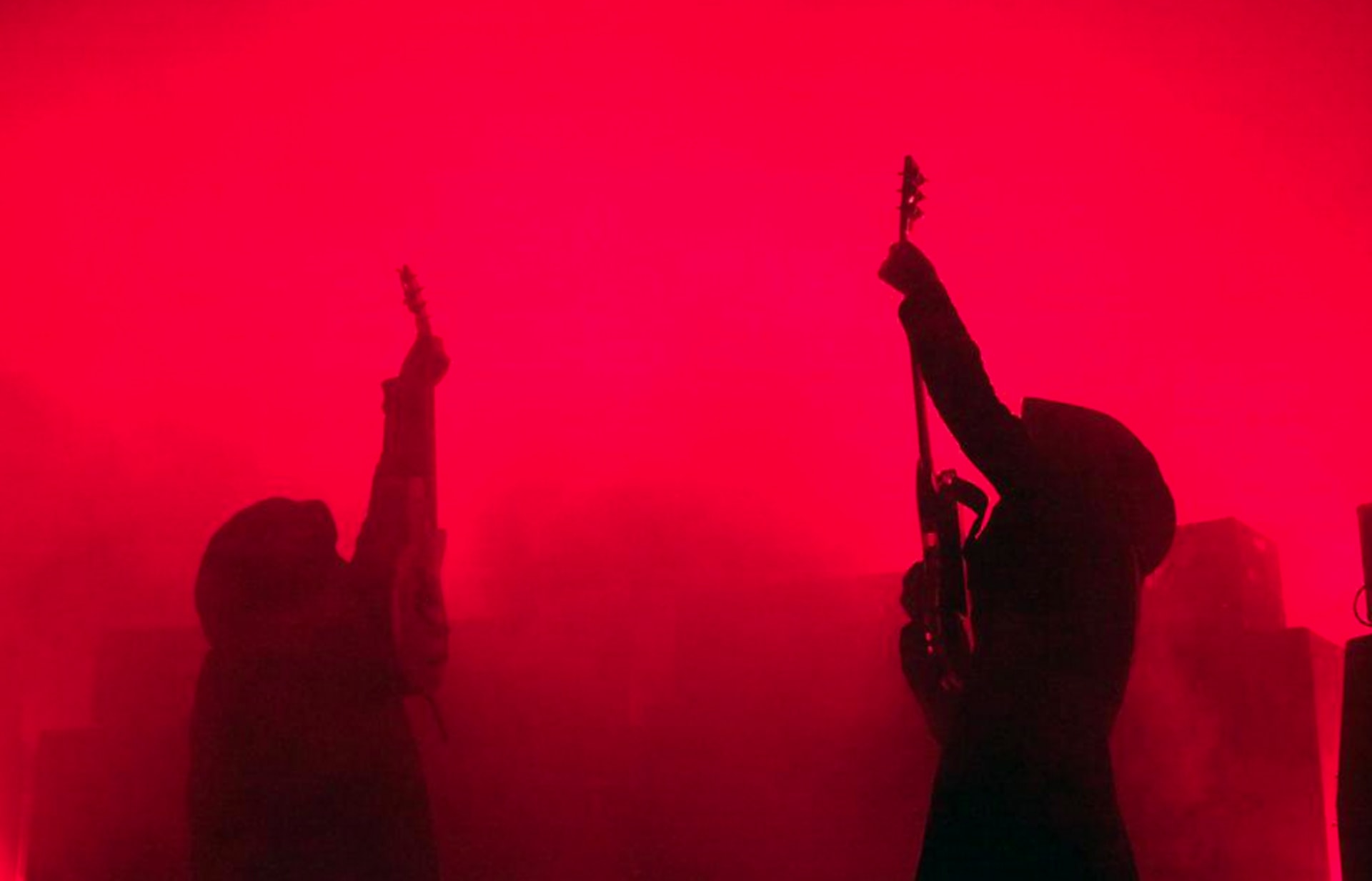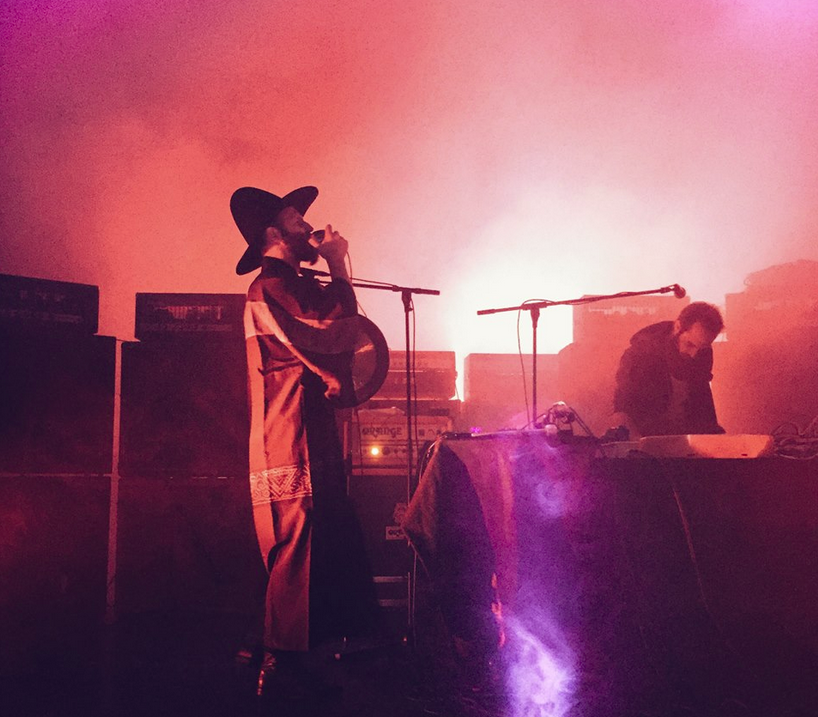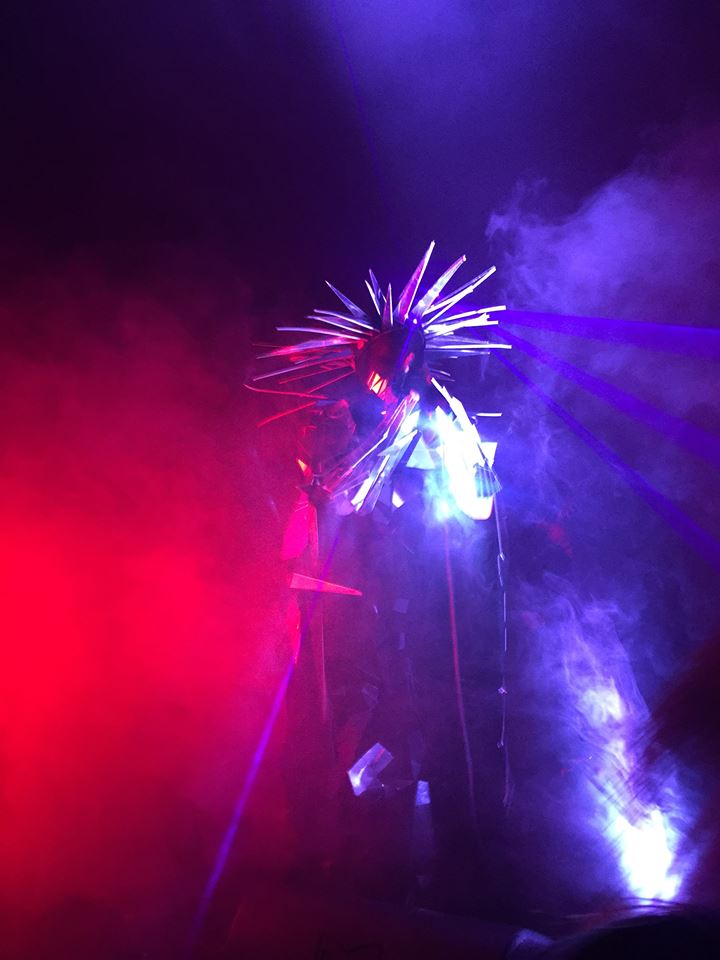
Here’s What You Missed at Sunn O)))’s Sold Out Berlin Gig
When I entered Berlin’s Heimathafen in Neukölln last night, the anticipation of the evening’s dark rituals was palpable. When the lights grew dim and smoke flooded the room, faces turned toward the stage in rapture. The metalheads with myriad band patches, the anarcho-hippies draped in personal fog machines of hash and marijuana smoke, the academics and the weirdos all joined in a glacial dance of bass and noise.
Thus began the second appearance of drone-metal legends Sunn O))) in Berlin since 2013. The first took place the night before, August 8, thanks to explorational sound/art collective CTM, thanks to how quickly the initial show sold out. Icelandic cellist and SHAPE artist Hildur Guðnadóttir filled the Saturday concert with her unique beauty, and on Sunday those duties were passed to Shaddah Tuum, a young Berlin duo I’ve followed for years. They draw from a similar well of inspiration as Sunn, but from the perspective of the grinding blend of industrial techno and digitalized metal aesthetics that have lately captured the interest of many underground electronic producers. Shaddah Tuum’s still finding their live-performance feet, but they elegantly captured Berlin’s current transformational zeitgeist with a combination of esoteric ritual, vocals that lurked and roared and instruments that ranged from traditional— gong, guitar and hand drum—and electronic. The finale featured a guest appearance by Carolin Langner, vocalist of avant-doom trio reliq, from which the other two Shaddah members also sprang. With destructive glee, she manipulated a flute using Auto-Tune, drawing streams of melodic noise and voice from the instrument that spoke of futuristic, majestic evil.

Before the shreds of stagnant fog ceased clinging to the crowd—many of whom refused to abandoned their front-row encampments between bands, even for on-duty photographers—the lights went down again and the machines belched forth another embrace of cold mist. It was a welcoming shroud to herald the promised monolith of sound that is the vision of Stephen O’Malley and Greg Anderson. The heaving wash of sub-sonics cut through the meat of the crowd, penetrating and vibrating bone—right to the soul, if such a thing can be said to exist. I turned to watch those around me, registering a beautiful melange of expressions on faces unaware of being watched. Revelation, ecstasis, awe and bestial lust rippled like veins on human masks lit by sacral glow while the druidic shapes onstage evoked a sound like the world waking up, sinews beneath earth and buried in mountains tensing and flexing. The din rose in fury before being shepherded into coherent melody by the high priest that soon joined them. Garbed in a familiar tattered robe, Hungarian black metal vocalist Csihar Attila transformed the atmosphere with his very presence. He became a fixture of idolization as hands reached to the heavens to snatch a fragment of the swirling magick in clawed grasp.

Attila’s vocals danced through solemn intonation to fragmented yelps, both triumphant and agonistic, as of distant thoughts from some caged entity beyond world and void straining against ancient bonds. This great Beast, born in tattered robes and re-emerging in shattered fragments of stars and light, emanated a power drawn not only from it’s core, nor from the shrouded figures behind it; it was a shared power, given mercurial form by the audience basking in the glory of oblivion. Even if the mind cannot truly conceive of a Presence beyond the flesh, a Divine factor, echoes of these ideas may still be given shape in the halls that man builds for his entertainments, in the practices of those whose minds seek a different way of being, and in the eagerness of like minds who gather to find new purpose in the worship of sound.
Photos by Isabel Kibler & CTM’s Stefanie Kulisch & Michail Stangl.
Published August 10, 2015.
